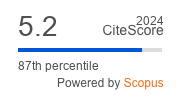Article | Open Access
Why Should I? Cybersecurity, the Security of the State and the Insecurity of the Citizen
| Views: | 4990 | | | Downloads: | 3469 |
Abstract: Assumptions are made by government and technology providers about the power relationships that shape the use of technological security controls and the norms under which technology usage occurs. We present a case study carried out in the North East of England that examined how a community might work together using a digital information sharing platform to respond to the pressures of welfare policy change. We describe an inductive consideration of this highly local case study before reviewing it in the light of broader security theory. By taking this approach we problematise the tendency of the state to focus on the security of technology at the expense of the security of the citizen. From insights gained from the case study and the subsequent literature review, we conclude that there are three main absences not addressed by the current designs of cybersecurity architectures. These are absences of: consensus as to whose security is being addressed, evidence of equivalence between the mechanisms that control behaviour, and two-way legibility. We argue that by addressing these absences the foundations of trust and collaboration can be built which are necessary for effective cybersecurity. Our consideration of the case study within the context of sovereignty indicates that the design of the cybersecurity architecture and its concomitant service design has a significant bearing on the social contract between citizen and state. By taking this novel perspective new directions emerge for the understanding of the effectiveness of cybersecurity technologies.
Keywords: cybersecurity; cyberspace; power; social contract; sovereignty
Published:
© Lizzie Coles-Kemp, Debi Ashenden, Kieron O'Hara. This is an open access article distributed under the terms of the Creative Commons Attribution 4.0 license (http://creativecommons.org/licenses/by/4.0), which permits any use, distribution, and reproduction of the work without further permission provided the original author(s) and source are credited.


